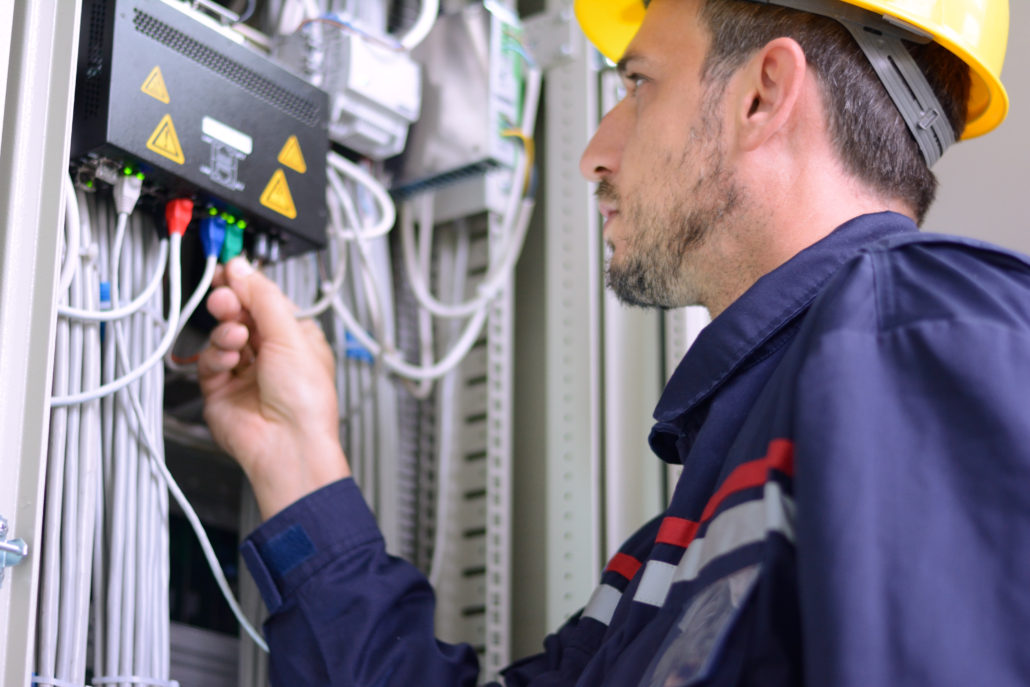Driving field engagement with Personal Risk Assessments (PRA)
January 11, 2020/by Barry Nelson
Five years ago, Brent Bowers made the decision to join Cupertino Electric Group (CEI) as a safety leader because he saw an opportunity to positively impact an already advanced safety culture.
Backed by a strong leadership commitment to safety, CEI’s 60 safety professionals sought to improve field engagement in safety processes. Previous safety technology systems at CEI had experienced lukewarm field adoption. Brent knew the value of technology and data in guiding his own work, but he chose to proceed with caution when it came to the field.
“Previously, the data we gathered were very rigid, and focused on lagging indicators; we didn’t have a lot of visibility into leading indicators and a good way to measure them,” says Brent. “We had 20 safety professionals collecting data, but little engagement from field operations. To change that, we had to lead with process, not technology. And whatever technology we used had to be simple and easy to use.”
Revolutionizing the Personal Risk Assessment (PRA)
With leadership and safety professionals already engaged, Brent set out to tackle field engagement using Personal Risk Assessments (PRAs), which are used by each field worker to identify hazards in his specific work location.
“We had to make sure folks understood what we wanted them to do, but more importantly, ensure they knew how it benefited them. The PRA is used in conjunction with a Standard Work Instruction (SWI) and Job Hazard Analysis (JHA), and its main purpose is to get the employees closest to the work to engage in their personal safety. So we streamlined our Pre-Task Plans (PTP) and Job Hazard Analysis processes to place more responsibility on personal safety, which is where the PRA comes in,” says Brent.
To facilitate field adoption, Brent sought a tool that would measure the performance of the PRAs and capture safety observations in real time. He turned to SmartTagIt to make this happen. SmartTagIt is a smartphone- based tool that automates the collection, reporting and analyses of safety processes.
Brent shared CEI’s internal requirements with the team at FactorLab, and they customized the SmartTagIt app to make it work for CEI.
“With SmartTagIt installed on every company device, we were able to give our foremen a tool to capture crew engagement. In addition, the tool allows us to recognize positive behaviors while also providing coaching opportunities to our crews,” says Brent. “We emphasized a fix it and learn it approach. No one is reprimanded for doing things incorrectly or identifying at-risk observations. Once the field understood this, their guard went down. Using SmartTagIt, we gained great visibility into the safety planning and engagement of our crews and field leadership.”
“Astounding engagement” in PRAs helps close the loop on safety
Adoption of the PRA process has been beyond Brent’s wildest expectations. “Two years ago we weren’t doing any PRAs,” says Brent. “Even six months ago, we were averaging under 200 PRAs a day. Today, I get over 600 PRAs a day; in the last six months, I’ve had 43,000 PRAs submitted.”
“In terms of daily engagement in the system, the numbers are astounding. We’ve seen an incredible pick up, 20 times more collection than with our previous system,” says Brent.
Brent attributes this success to CEI’s commitment to safety and SmartTagIt’s ease of use and ability to transparently share data across the organization.
“Everyone has access to data on their project, to a certain point. The nice thing about Smart Tag It is that it allows users to decide what they want to see and what they don’t. Managers can engage with their field leadership through the app by adding comments or liking an observation, similar to other social media platforms, without much forethought or afterthought. It takes all of 30 seconds, not 10 minutes,” says Brent.
One unexpected benefit of greater engagement with the PRA process is an increase in the volume and detail of observations by non-safety professionals.
“In addition to the PRA process, Production leadership has taken the opportunity to submit both safe and at-risk observations, adding to our safety engagement levels,” he says.
Today, well over 1000 people are auditing PRAs, submitting observations and capturing safety conversations using Smart Tag It—including foremen, safety professionals, executive management, and project management—all actively engaged in the safety performance of the organization.
Taking safety data further
With SmartTagIt, CEI leadership has a granular view into which employees are more engaged in the safety program, and whether appropriate coaching is being delivered. Leveraging real-time analysis on PRAs, he can compare engagement levels for different crews and divisions, and also see whether leadership is teaching and coaching in the field.
Recognizing users for their engagement is a big part of CEI’s safety culture, and gift cards are sent out to users that complete certain milestones and that are actively contributing to the safety culture.
Looking forward, Brent expects to be able to connect and correlate leading with lagging indicators in one cohesive dashboard. Currently, lagging indicators are recorded in an ERP system; the next phase will be to export this information to the SmartTagIt dashboard.
“Being able to see where incidents are occurring against what we see in the SmartTagIt system will help identify trends and areas to focus on. SmartTagIt has been instrumental in improving the front-line involvement in our safety culture, while also giving management a tool to measure safety performance on our projects,” says Brent.






